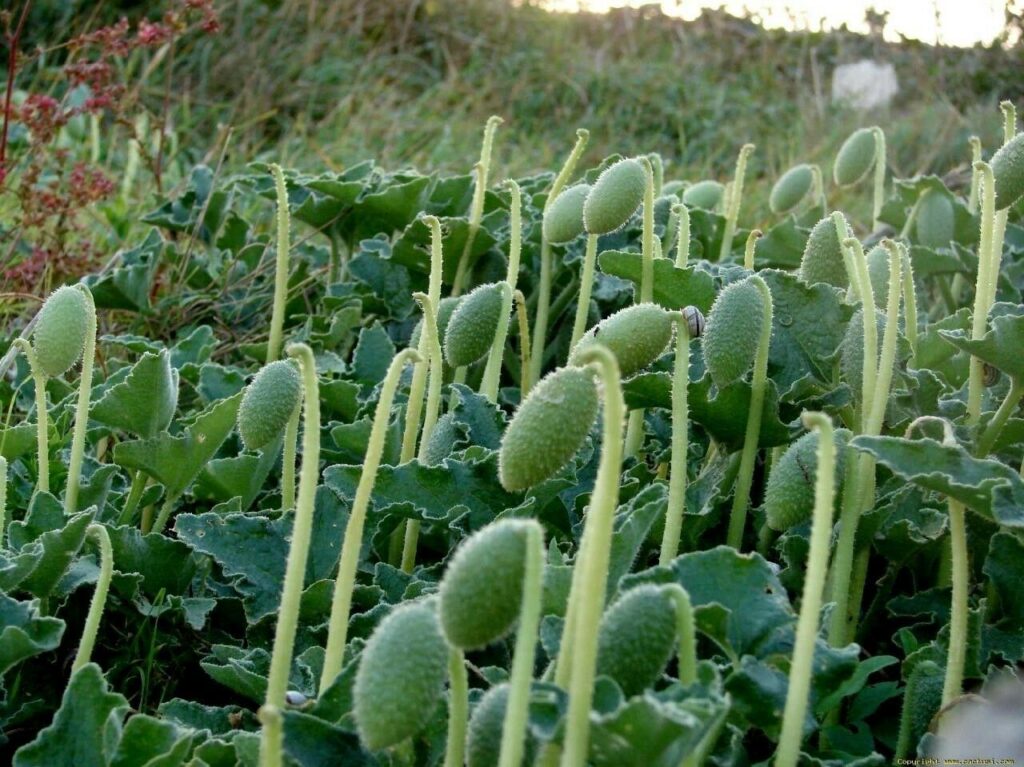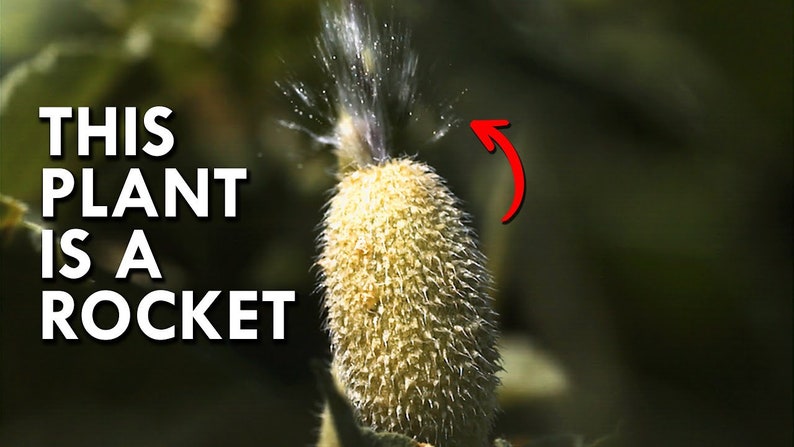Squirting Cucumber – mygardenchannel
The Squirting Cucumber Plant is a very unique wild plant found naturally growing in the Mediterranean.
It can be grown in the States as an annual or in zones 8-11 for longer periods. Anyone can enjoy this plant during their growing season as it takes between 50-70 days to produce its fruit.
Squirting cucumber (Ecballium elaterium) is a hairy, rough, thick-stemmed plant may spread out to about 60 cm (about 24 inches) and has yellow bell-shaped flowers.
The long-stalked bluish green fruits are about 4–5 cm (1.6–2 inches) long. Upon reaching maturity, the fruits explosively eject their brown seeds as they detach from the stem; the seeds may travel 3 to 6 meters (about 10 to 20 feet) from the plant.

Ecballium elaterium is a PERENNIAL growing to 0.3 m (1ft) by 1 m (3ft 3in).
See above for USDA hardiness.
It is hardy to UK zone 9 and is frost tender. It is in flower from June to August, and the seeds ripen from August to September. The species is monoecious (individual flowers are either male or female, but both sexes can be found on the same plant) and is pollinated by Insects.
The plant is self-fertile.
Suitable for: light (sandy), medium (loamy) and heavy (clay) soils, prefers well-drained soil and can grow in nutritionally poor soil. Suitable pH: mildly acid, neutral and basic (mildly alkaline) soils. It cannot grow in the shade. It prefers dry or moist soil.
Squirting Cucumber Medicine
The squirting cucumber has been used as a medicinal plant for over 2,000 years, though it has a very violent effect upon the body and has little use in modern herbalism.
The juice of the fruit is antirheumatic, cardiac and purgative.
The plant is a very powerful purgative that causes evacuation of water from the bowels.
The squirting cucumber parts are used internally in the treatment of oedema associated with kidney complaints, heart problems, rheumatism, paralysis and shingles.
Externally, it has been used to treat sinusitis and painful joints. It should be used with great caution and only under the supervision of a qualified practitioner. Excessive doses have caused gastro-enteritis and even death.
The fully grown but unripe fruits are harvested during the summer, they are left in containers until the contents are expelled and the juice is then dried for later use.
he root contains an analgesic principle.
Squirting Cucumber Plant For Sale
